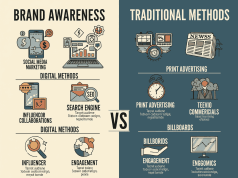In a world saturated with advertisements and marketing messages, the ability to stand out is more crucial than ever. One of the most effective ways brands can capture consumer attention and foster deep connections is through storytelling. Narratives that resonate with audiences not only enhance brand awareness but also create a lasting impression. This article delves into the power of storytelling in brand strategy and explores how narratives drive engagement and loyalty.
Why Storytelling Matters
Emotional Connection
At its core, storytelling is about connection. When brands share their stories—whether through the history of their inception, the journey of their products, or inspiring customer testimonials—they humanize their image. Emotional connections are pivotal in today’s marketing landscape, as consumers are drawn to brands that evoke feelings of trust, empathy, and even nostalgia. According to research, emotionally charged content leads to higher engagement rates and greater retention.
Memorable Messages
People remember stories far better than they retain facts and figures. The narrative structure—a beginning, middle, and end—creates a framework that helps consumers process information. By weaving essential brand messages into a story, companies can ensure that their core values and missions resonate long after the message has been delivered.
The Elements of Compelling Brand Stories
Authenticity
Authenticity is paramount in storytelling. Consumers today are discerning; they can quickly identify inauthentic narratives. Brands that share genuine stories about their struggles, triumphs, and missions tend to resonate well with their audience. Real-life anecdotes and testimonials can build trust and credibility, making the brand more relatable.
Relatable Characters
Every good story has characters that audiences can relate to. Whether these characters are founders, employees, or customers, they should represent the brand’s values and mission. When audiences see themselves in these characters, they are more likely to engage with the brand on a personal level.
Clear Themes and Values
Strong brand stories often revolve around clear themes and values. Whether it’s innovation, sustainability, or community, a well-articulated theme provides a backbone for the narrative. Brands that consistently weave their values into their narratives not only attract like-minded consumers but also cultivate a loyal following.
Platforms for Storytelling
Social Media
Social media platforms provide an ideal stage for brand storytelling. Formats like Instagram stories, Facebook live sessions, and TikTok videos enable brands to share snippets of their narratives in creative ways. Utilizing visual elements—images, videos, infographics—can significantly enhance engagement and shareability.
Blogs and Websites
Your brand’s website and blog are prime locations to delve deeper into innovative storytelling. Long-form articles, case studies, and behind-the-scenes content can allow for a more comprehensive exploration of brand narratives. These platforms are also beneficial for SEO, driving organic traffic to enhance awareness.
Email Marketing
Email campaigns are an excellent way to share ongoing narratives with a dedicated audience. Using storytelling in newsletters can keep subscribers engaged and informed about new developments, product launches, and community initiatives.
Success Stories
Nike
Nike’s “Just Do It” campaign exemplifies the power of storytelling. The brand doesn’t just sell sportswear; it sells motivation and inspiration. By sharing personal stories of athletes overcoming challenges, Nike creates an emotional bond with its audience, reinforcing its brand image of empowerment.
Dove
Dove’s “Real Beauty” campaign is another notable example. By challenging societal beauty standards and telling the stories of real women, Dove resonated with a broad audience. This powerful narrative not only drove brand awareness but also positioned Dove as a champion of authenticity in the beauty industry.
Conclusion
The power of storytelling in brand marketing cannot be overstated. In a landscape where consumers are bombarded with messages, compelling narratives stand out and forge authentic connections. By harnessing the elements of storytelling—authenticity, relatability, and clear values—brands can drive not only awareness but also loyalty and engagement. As businesses continue to evolve, embracing the art of storytelling will be key to captivating the hearts and minds of consumers.









